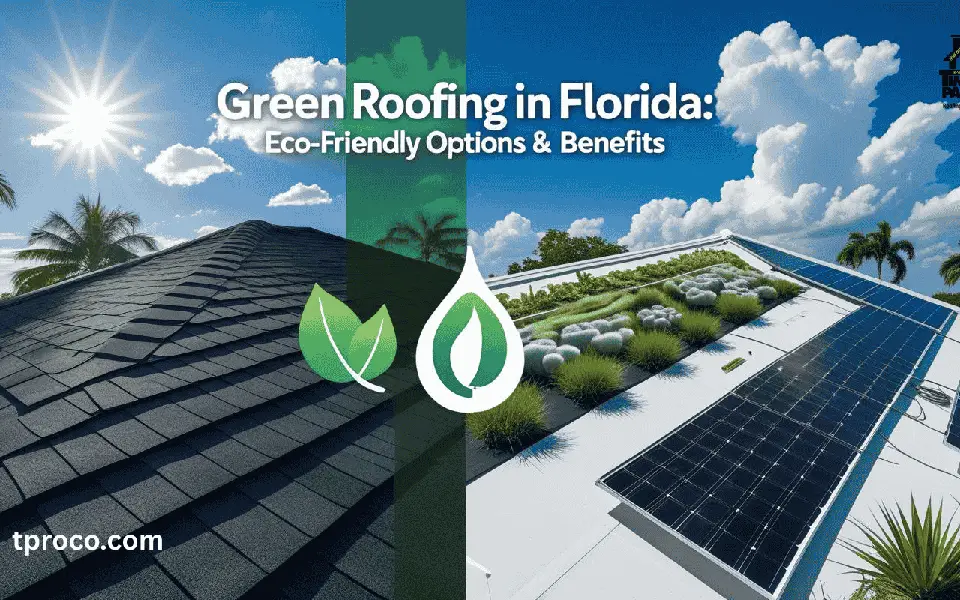Our Blogs
Cleaning & Preserving Clay Tile Roofs in Florida: Keep That Classic Look 🌺
Clay tile roofs lend a timeless, Mediterranean charm to many Florida homes. Yet without proper upkeep, moss, algae, and cracks can spoil their beauty and even invite leaks. Florida’s humid, stormy climate accelerates tile weathering—especially if algae-laden debris sits on surfaces for months. In this blog, we’ll cover gentle cleaning methods, protective sealants, and repair strategies to keep your clay tile roof looking vibrant and performing well for decades. From selecting a mild wash solution to patching cracked tiles, you’ll learn to preserve that classic tile aesthetic while sidestepping the pitfalls of overly aggressive cleaning techniques that can do more harm than good.

Why Clay Tiles Need Special Care in Florida
Unlike asphalt shingles or metal panels, clay tiles are porous and can soak in moisture. Combine that with Florida’s:
- High Humidity & Rain: Persistent dampness fosters moss, algae, and lichen that cling to tile surfaces. These growths trap additional moisture, potentially leading to cracks as water expands under the sun.
- Salt Air (Coastal Areas): Salt crystals can accelerate surface wear or create small pitting, weakening tile if not periodically rinsed off.
- UV Exposure: While clay resists fading better than some synthetic materials, intense sunlight can still cause surface weakening if protective glazes erode.
Proper maintenance extends tile life to 50+ years, but skipping it can lead to hidden fractures or a “carpet” of moss that undermines the tiles’ structural integrity. Moreover, harsh pressure washing can chip or crack these fragile tiles. That’s why Florida homeowners with clay roofs should stick to gentle methods and schedule periodic inspections. Keeping tiles clean and sealed ensures both curb appeal and a robust, watertight roof system in the face of Florida’s storms.
Safe Cleaning Techniques
Many Florida homeowners rely on pressure washing to remove algae from roofs, but clay tiles can’t always handle the same force as sturdier materials. Instead, try:
Soft Washing:
A low-pressure sprayer combined with a mild cleaning solution (often bleach or sodium percarbonate-based) to loosen algae and moss. Keep pressure under ~1000 PSI, focusing on letting the solution do the work. Rinsing with gentle water flow prevents tile chipping or breakage.
Manual Brushing:
For persistent spots, a soft-bristled brush can help, but never scrub too aggressively—this may scratch or erode the clay’s surface. Work from the ridge downward, so dislodged debris flows off easily.
Preventing Runoff Damage:
Protect landscaping below by wetting it first or covering it, since cleaning solutions can harm plants if concentrated. Florida’s frequent rain can help dilute leftover runoff, but it’s still wise to control or redirect the cleaning stream.
Professional Cleaners:
Many Florida roof cleaners specialize in tile-safe methods. They’ll use equipment or harnesses to walk carefully on tiles, minimizing breakage risk. If your roof is steep or you’re unsure of technique, hiring pros might be safer—and could yield better results.
Patience is key. Harsh washers or chemical-laden solutions might strip protective glazes or cause micro-cracks. By opting for a gentler approach, you remove moss and stains while preserving tile integrity. A well-executed cleaning reveals the clay’s original hue and readies the surface for optional sealants or minor repairs.
Repairing Cracks & Replacing Damaged Tiles
Over time, Florida’s storms or foot traffic can crack or chip clay tiles:
- Locate All Fractured Tiles: Inspect the roof after cleaning. Fine cracks can hide beneath dirt or algae, so a clean surface reveals them more easily.
- Remove Broken Pieces: Carefully lift the surrounding tiles or use a pry bar to free nails if your system uses them. Some tile roofs in Florida use mortar or adhesive “pads,” so gently chipping away the old mortar might be needed.
- Install Matching Replacements: Use the same tile model or one close in color, shape, and thickness. Mismatched thickness can create water flow issues. If exact matches aren’t available, place new tiles in less visible roof areas or near ridges.
- Repair Minor Cracks: If a hairline crack doesn’t penetrate fully, consider a tile sealant or epoxy. This is a short-term fix—fully replacing severely cracked tiles is usually safer, especially under Florida’s high-wind conditions.
A single broken tile can funnel rain onto the underlayment or deck, leading to rot or interior leaks. Promptly fixing them ensures your roof remains water-tight and visually uniform. Use caution when navigating clay tiles—stepping improperly can crack neighboring tiles, compounding the job.
Sealing & Protective Coatings
After a thorough cleaning and any necessary repairs, you may opt for a protective sealant:
- Breathable Sealers: For unglazed clay tiles, a clear, water-repellent sealer can help repel rain, moss growth, and salt infiltration. Look for vapor-permeable formulas so moisture doesn’t get trapped inside the tile.
- Glazed or Factory-Sealed Tiles: Some clay tiles come pre-glazed. Additional sealing might be unnecessary. Confirm with the manufacturer—over-sealing can sometimes void warranties or cause bonding issues.
- Re-Sealing Frequency: In Florida, reapplying tile sealant every 3–5 years is common, especially near the coast where salt and humidity accelerate wear.
Sealants help maintain color vibrancy and slow algae regrowth. They won’t make clay tiles bulletproof, but they do reduce moisture penetration and surface erosion. A sealed tile surface also cleans more easily in the future—dirt and algae wash off with less scrubbing. Combine sealing with routine gentle cleanings, and your clay roof stays bright and less prone to cracks over time.
Avoiding Damage from Foot Traffic
Clay tiles can crack under improper walking techniques:
- Walk on Lower Thirds: The curved “lower third” portion of barrel tiles or the overlap of flat tiles is stronger. Stepping on the middle can cause them to flex or snap.
- Use Walking Pads or Foam: Some roofers lay padded walkways on tile roofs for safer movement during inspections or maintenance. This spreads your weight across multiple tiles.
- Minimize Trips: Group your tasks—like cleaning gutters or checking vents—to reduce foot traffic. The fewer times you step on a clay roof, the less breakage risk.
Many Florida tile owners hire professionals for tasks like cleaning or roof repairs, precisely because tile is delicate. If you must DIY, do so carefully, wearing rubber-soled shoes and distributing your weight. One wrong step can crack a tile, exposing your roof to moisture infiltration or requiring an unsightly patch if replacement tiles don’t match.
Conclusion
🌺 Clay tile roofs bestow a timeless, tropical charm on Florida homes but demand thoughtful upkeep to resist moss, salt, and cracks. By choosing gentle cleaning methods, diligently replacing broken tiles, and considering breathable sealants, you ensure each tile remains solid and vibrant for decades. Protecting your investment also means minding foot traffic—one careless step can cause hairline fractures or bigger leaks. And while Florida’s fierce storms test even the toughest materials, well-maintained clay tiles often outlast their synthetic counterparts, keeping your home cool and stylish. With a bit of care, your tile roof stays pristine under the Sunshine State’s bright skies.
Frequently Asked Questions (FAQ)
🌺 Love Your Clay Tile Roof? Keep It Clean, Strong & Stunning!
Clay tile roofs need care to last in Florida’s climate. Learn how to clean, seal, and repair tiles safely so your home keeps its classic charm—without moss, stains, or cracks.
#tproco #tppro #tprci #urro #rrfl
#ClayTile #RoofCleaning #FloridaStyle #TampaHomes #OrlandoTile #SunshineState
Schedule a Free InspectionAbout the Author

Timothy Parks
CEO
📢 Stay Informed: Communication & Consent Updates
At Timothy Parks Roofing & Construction Inc., we prioritize transparency in our communications. By submitting a request, you agree to receive calls, texts, and emails regarding our services. Standard messaging rates may apply. You can opt-out at any time by replying STOP or contacting us directly.
✅ Florida License: #CBCO59592, #CCC1327217, #HI4878
📌 Privacy & Terms: Read our Privacy Policy and Terms of Service.



